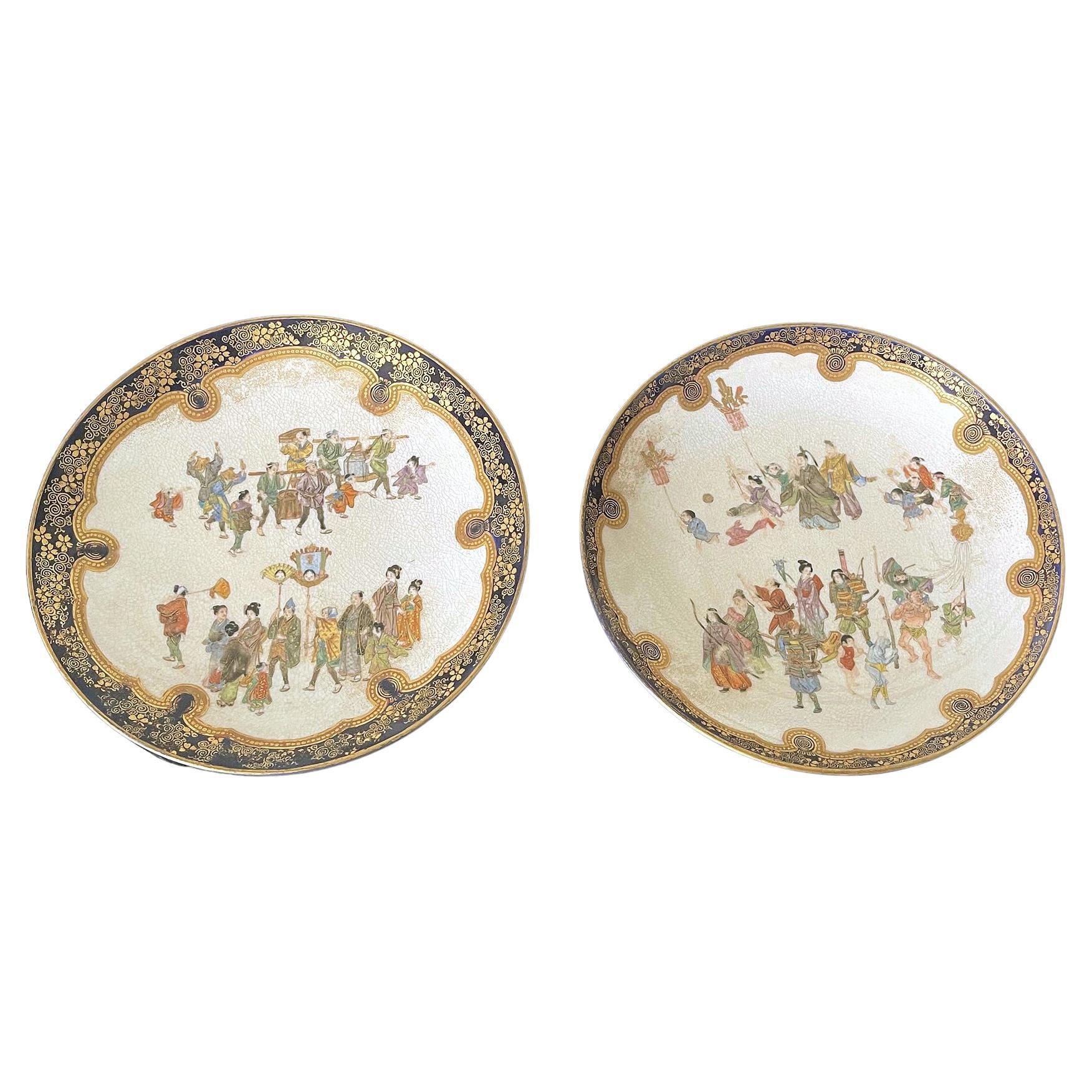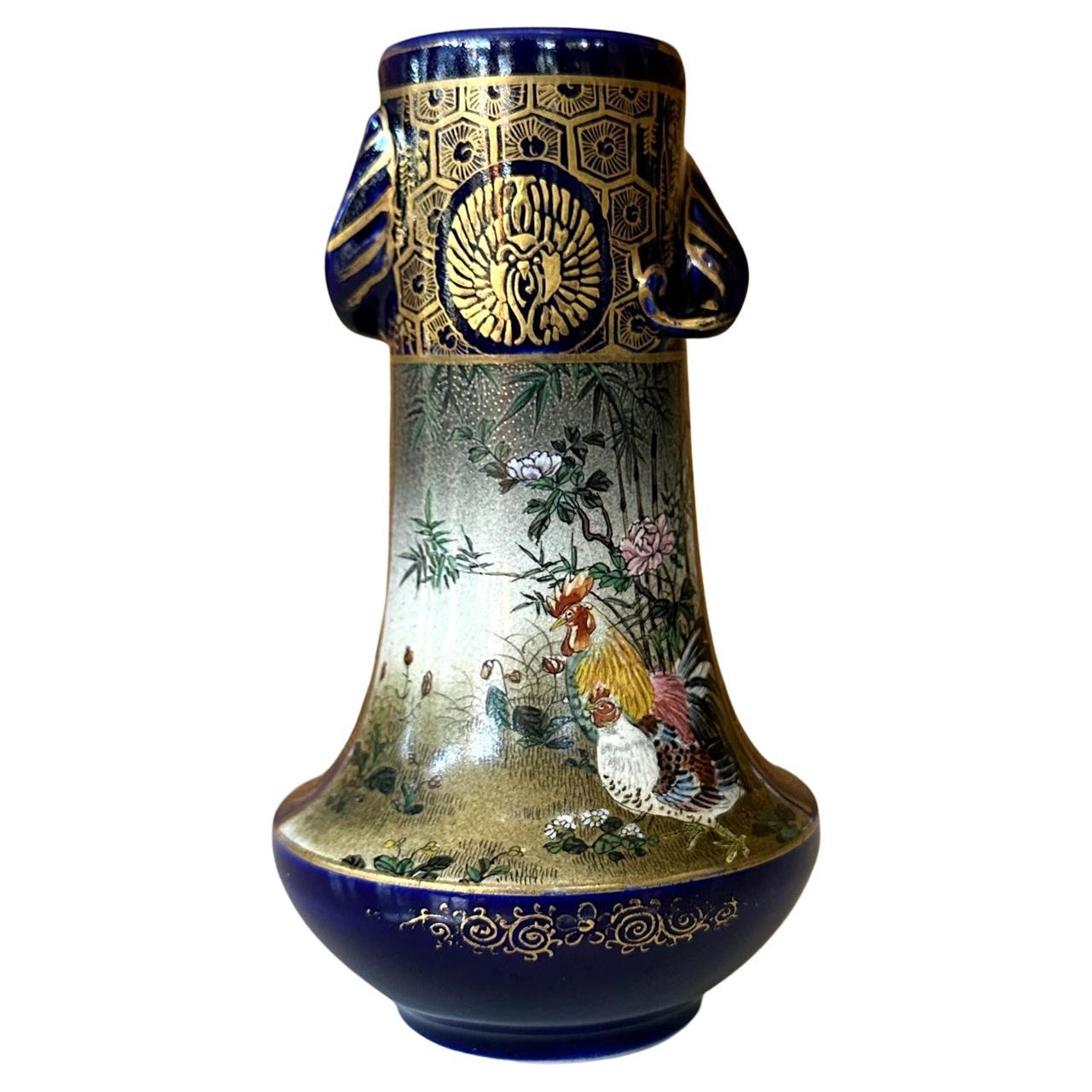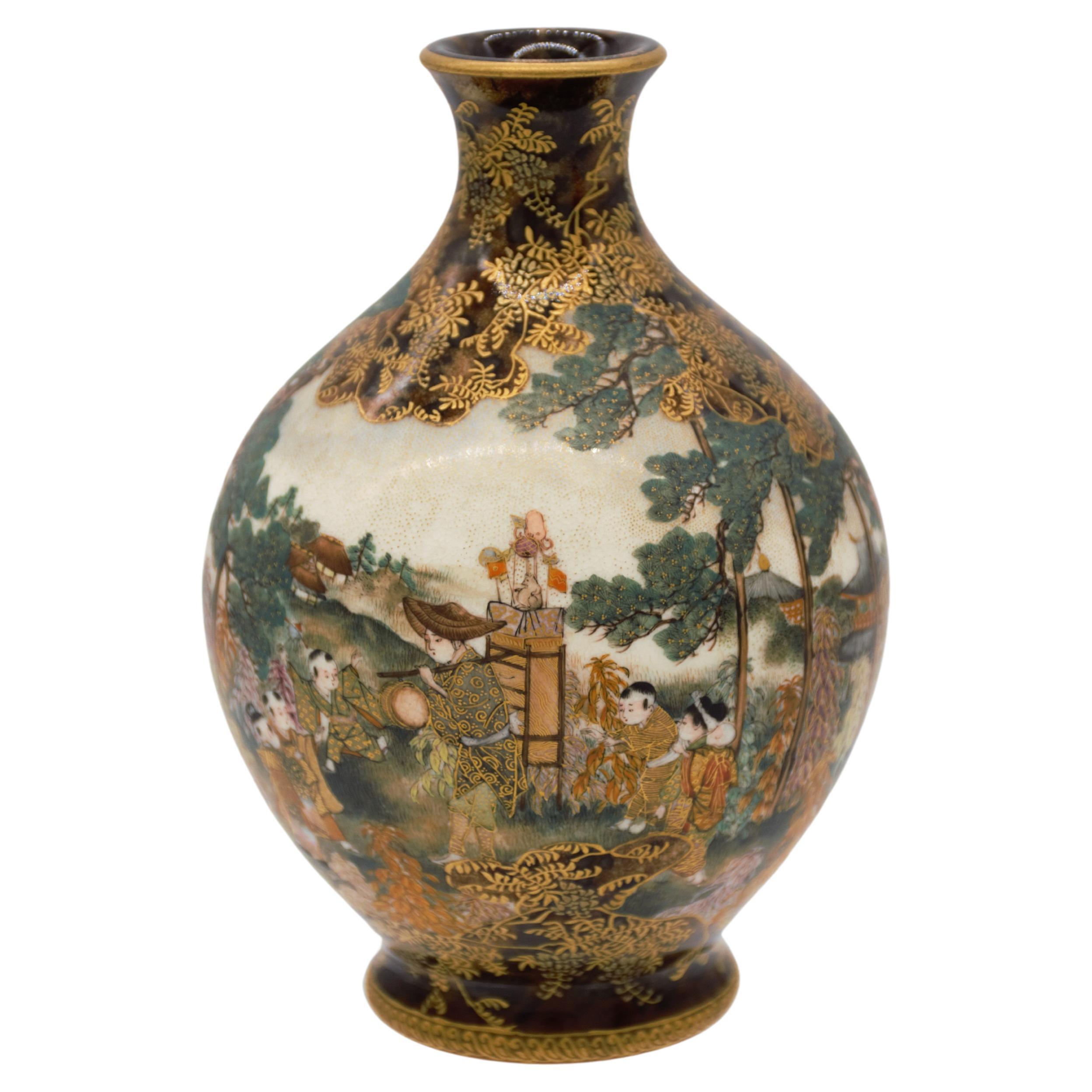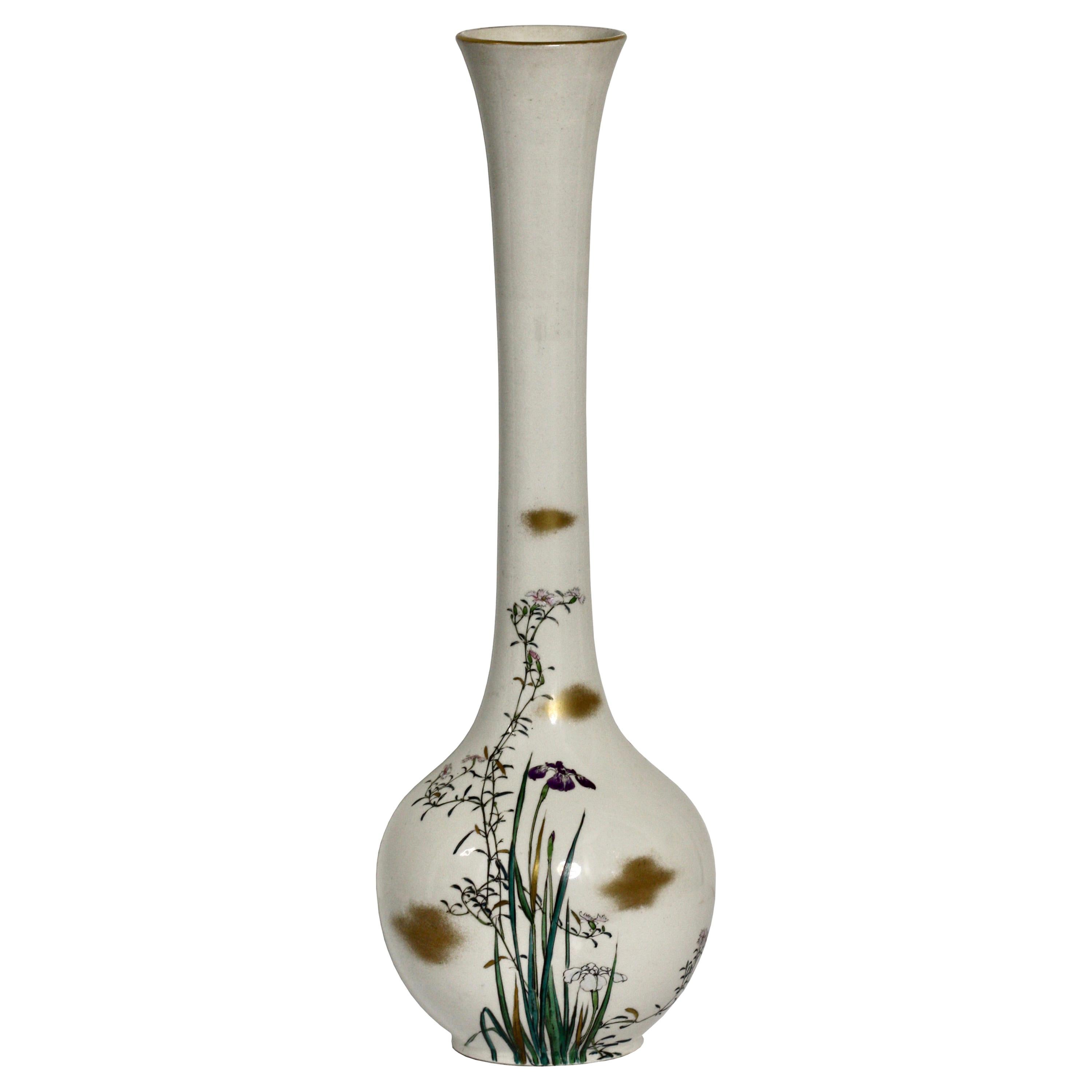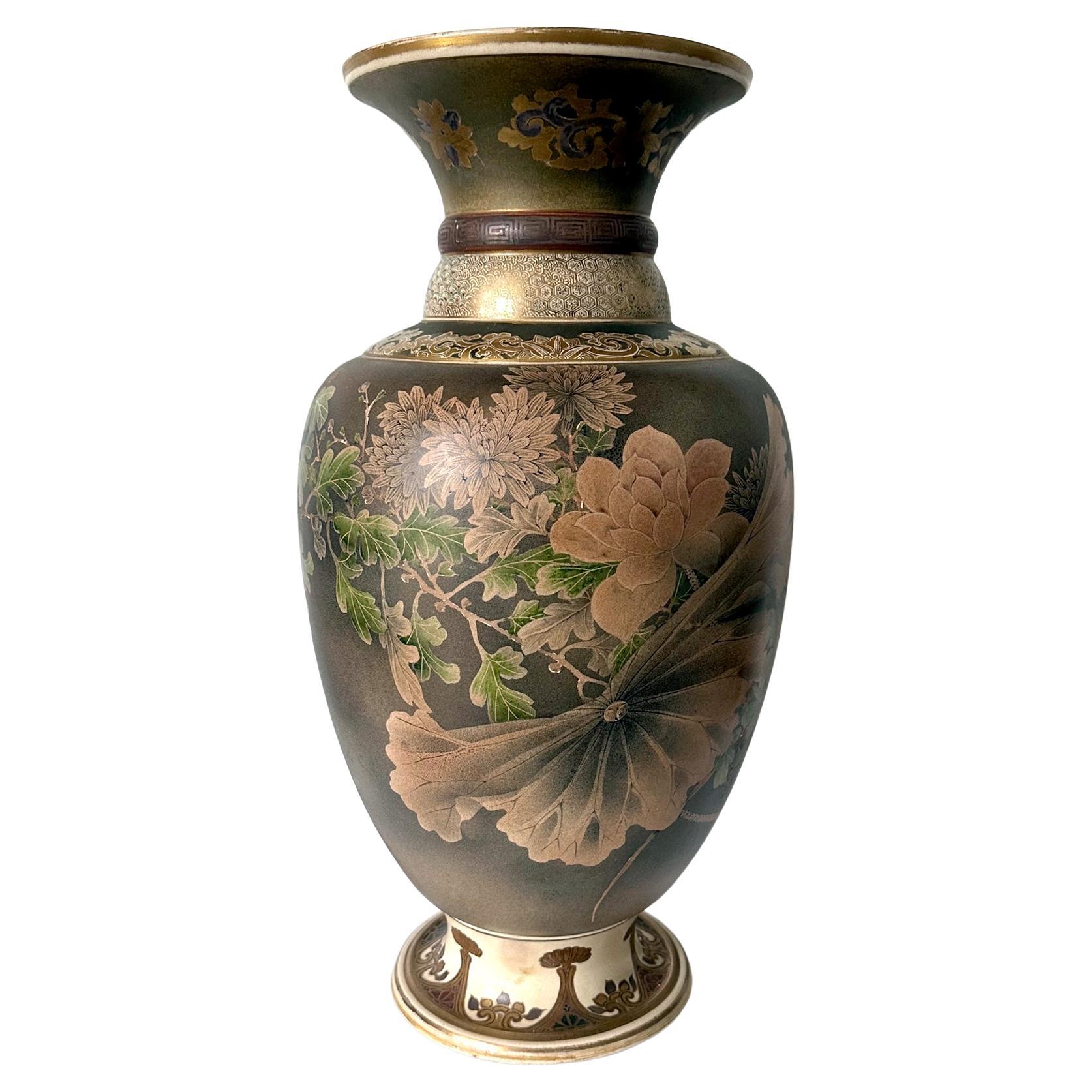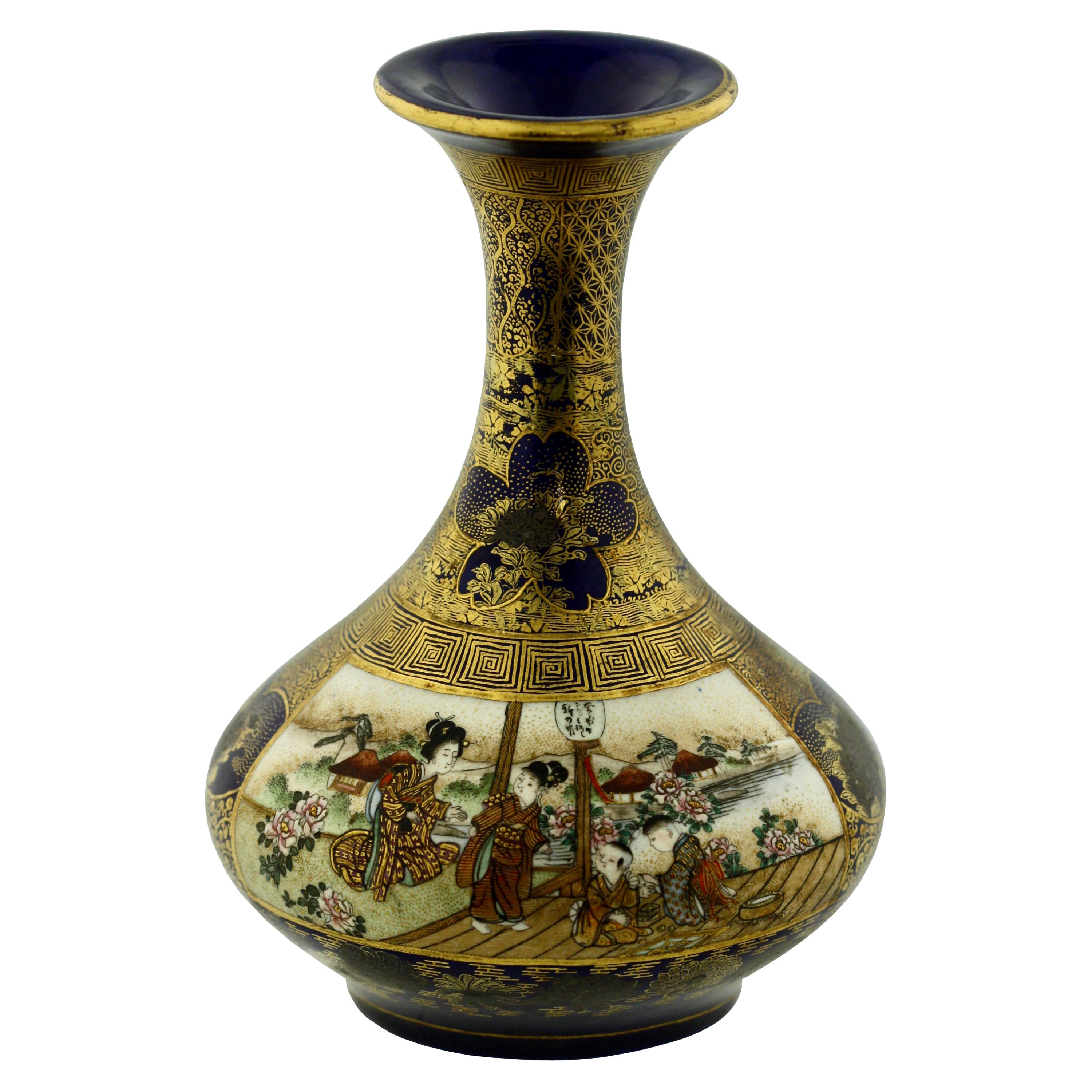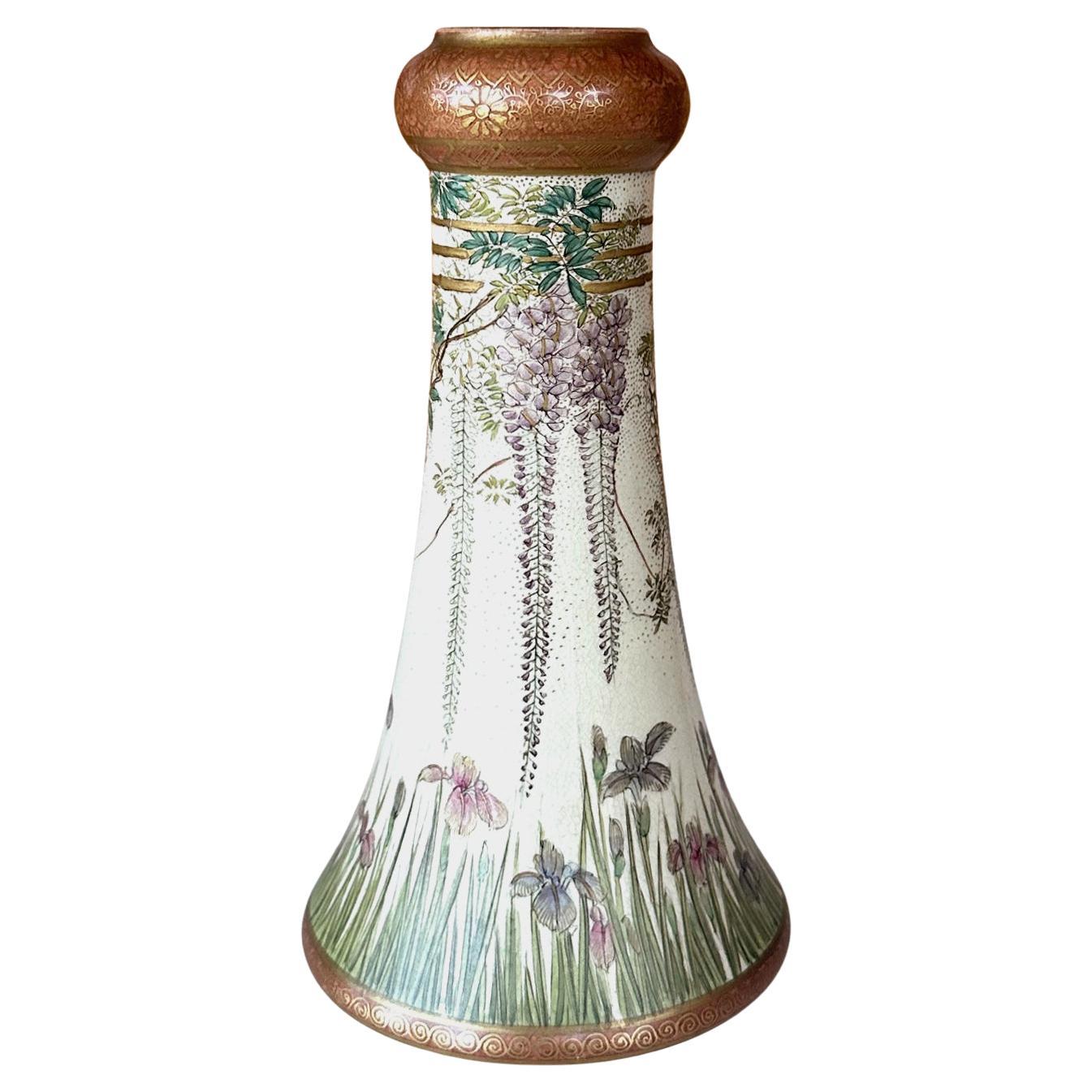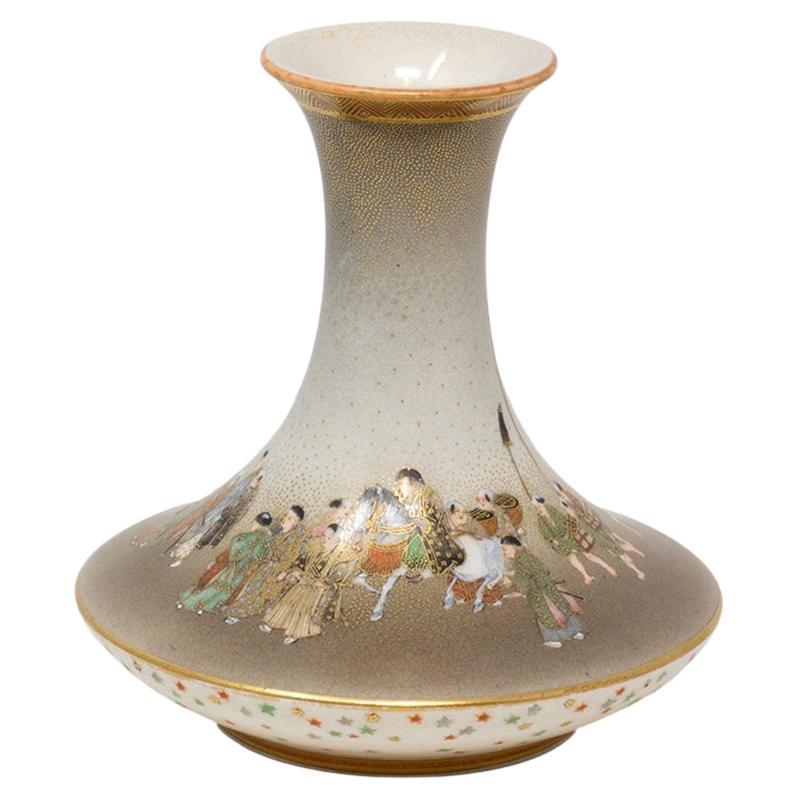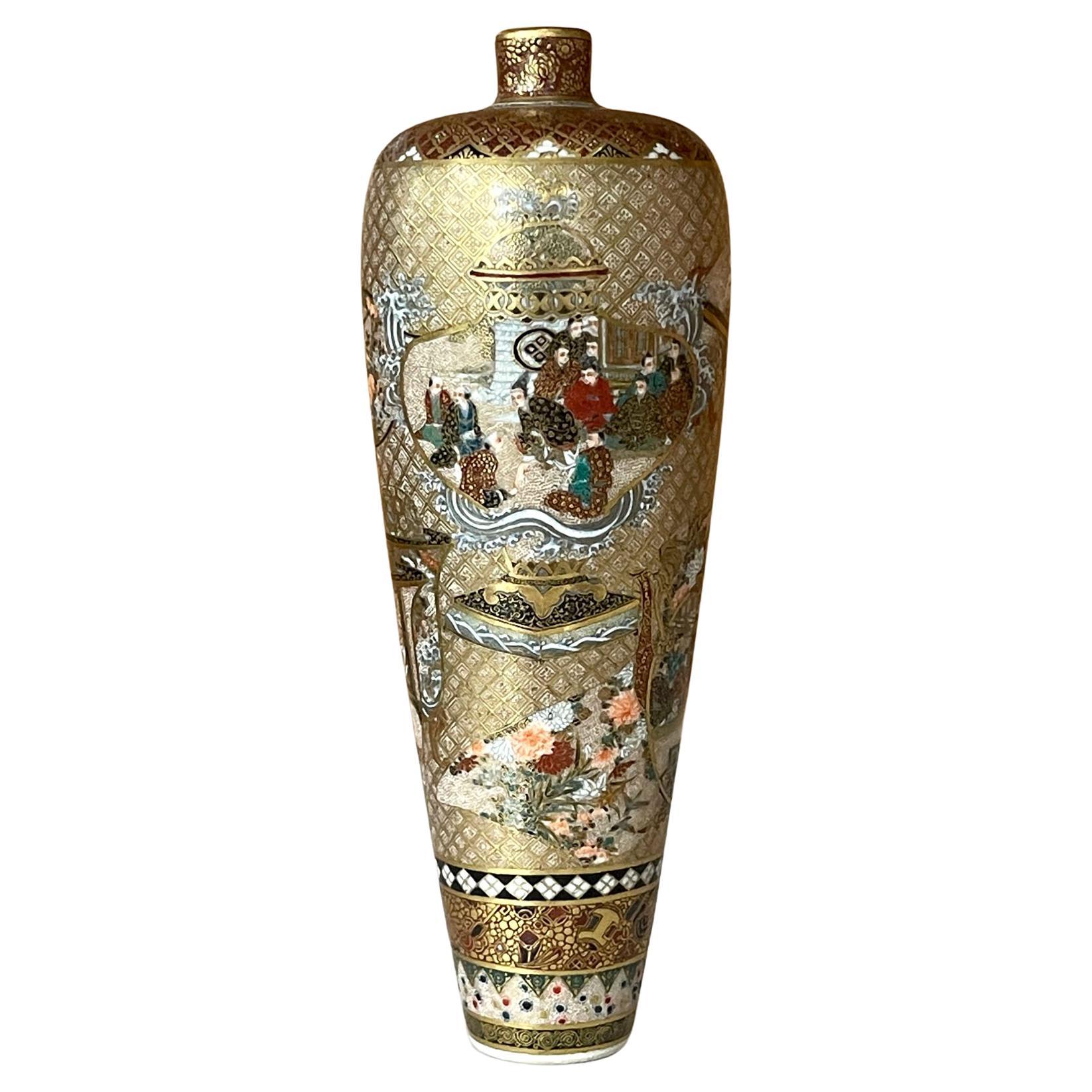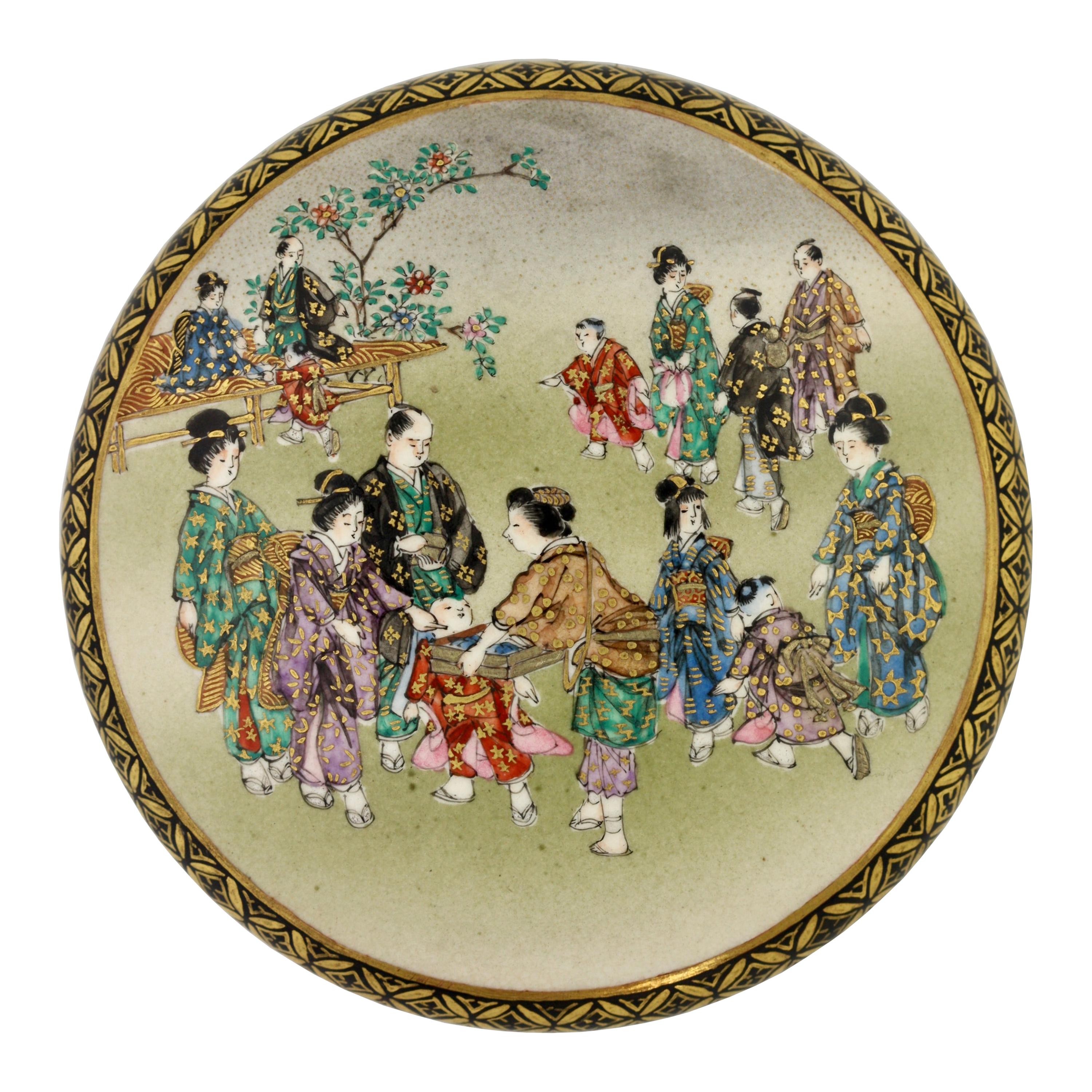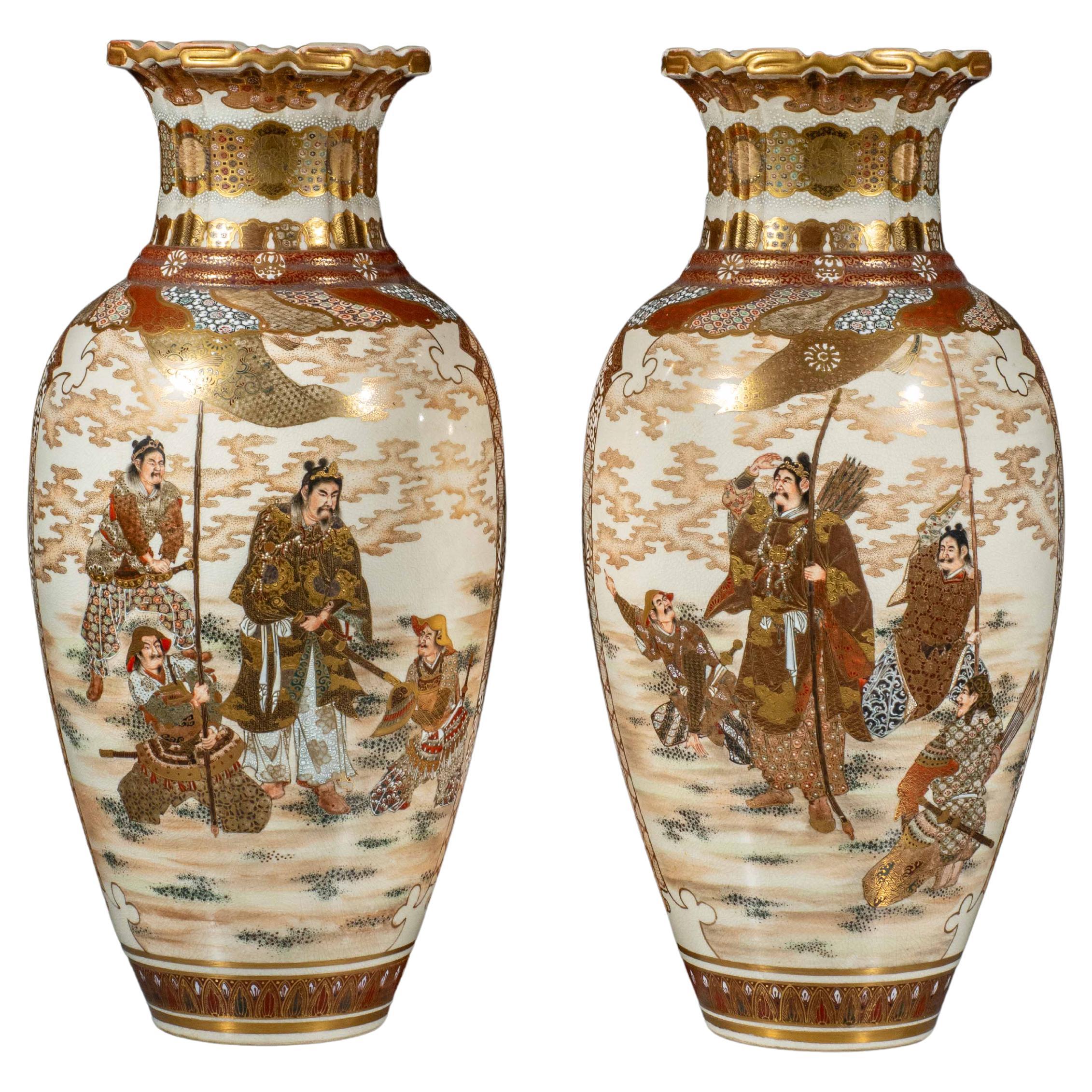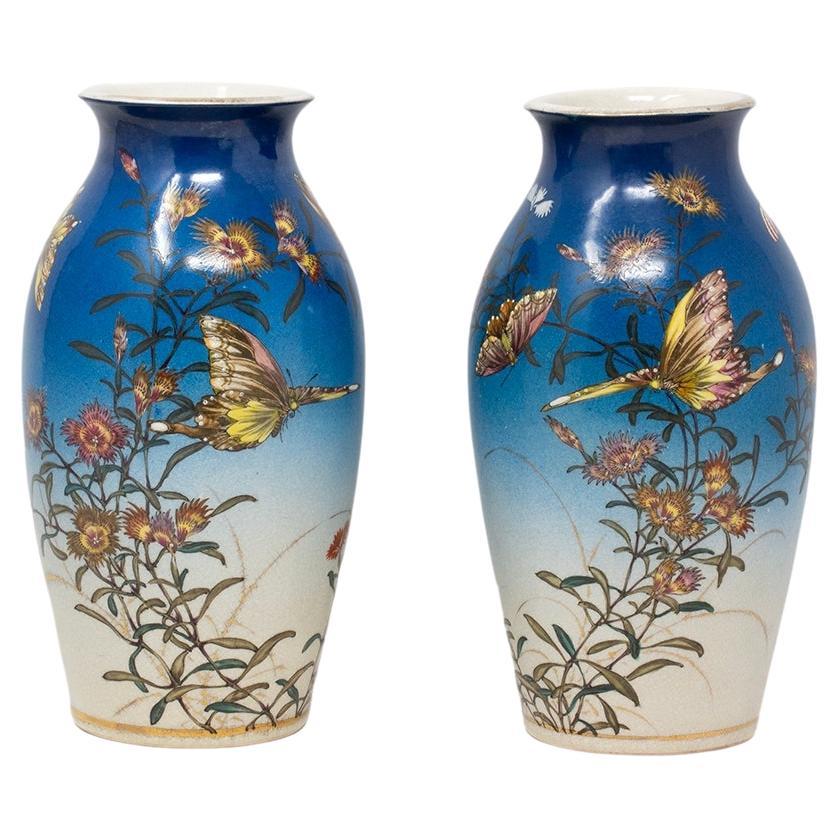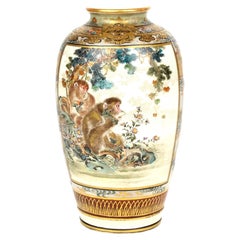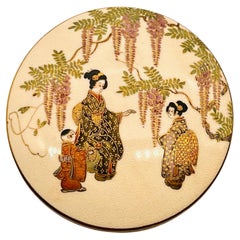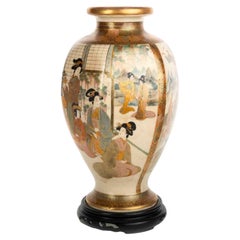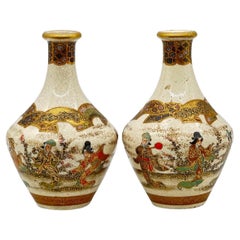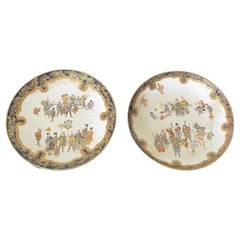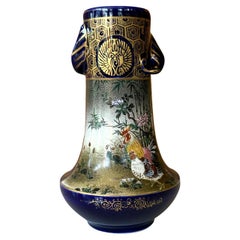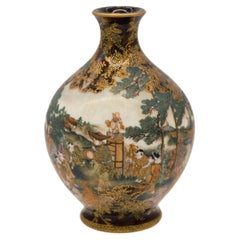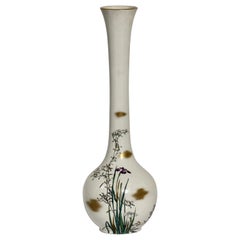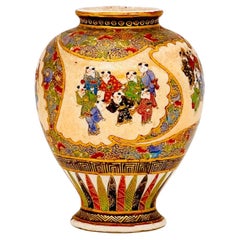
A Exquisite example of A Satsuma miniature vase by Kinkozan.
View Similar Items
Want more images or videos?
Request additional images or videos from the seller
1 of 15
A Exquisite example of A Satsuma miniature vase by Kinkozan.
About the Item
- Dimensions:Height: 2.76 in (7 cm)Width: 1.97 in (5 cm)Depth: 2.76 in (7 cm)
- Materials and Techniques:
- Place of Origin:
- Period:
- Date of Manufacture:1890
- Condition:Wear consistent with age and use.
- Seller Location:London, GB
- Reference Number:1stDibs: LU8001244019352
About the Seller
No Reviews Yet
Vetted Professional Seller
Every seller passes strict standards for authenticity and reliability
Established in 2001
1stDibs seller since 2023
15 sales on 1stDibs
Authenticity Guarantee
In the unlikely event there’s an issue with an item’s authenticity, contact us within 1 year for a full refund. DetailsMoney-Back Guarantee
If your item is not as described, is damaged in transit, or does not arrive, contact us within 7 days for a full refund. Details24-Hour Cancellation
You have a 24-hour grace period in which to reconsider your purchase, with no questions asked.Vetted Professional Sellers
Our world-class sellers must adhere to strict standards for service and quality, maintaining the integrity of our listings.Price-Match Guarantee
If you find that a seller listed the same item for a lower price elsewhere, we’ll match it.Trusted Global Delivery
Our best-in-class carrier network provides specialized shipping options worldwide, including custom delivery.More From This Seller
View AllA Exquisite Japanese Satsuma Vase.Signed by Rokuzan. Meiji period
Located in London, GB
A Exquisite Japanese Satsuma Vase.
Signed by Rokuzan.
Meiji period
of inverted baluster form, decorated with two main panels featuring two monkeys beneath a tree, Japanese immortals...
Category
Antique 19th Century Japanese Ceramics
Materials
Ceramic, Porcelain
A Fine Japanese Satsuma kogo (incense box) Signed by Kinkozan. Meiji period
Located in London, GB
A Satsuma circular kogo (incense box) and cover signed by Kinkozan
19th century
Finely painted in enamels and gilt, the cover with wisteria and a scene of a woman and children ...
Category
Antique Late 19th Century Japanese Ceramics
Materials
Ceramic, Porcelain
A Large Antique Japanese Satsuma Vase., Signed by Kitamura. Meiji Era
Located in London, GB
A LARGE JAPANESE SATSUMA BALUSTER VASE.
MEIJI PERIOD (1868 - 1912)
Signed by Kitamura
of hexagonal form, decorated with a scene of Japanese saints surrounded by attendants, ano...
Category
Antique Late 19th Century Japanese Ceramics
Materials
Ceramic, Porcelain
A Fine pair of Japanese Satsuma Vases. Signed Yozan .Meiji Period
Located in London, GB
A Fine Pair of Japanese Satsuma Vases.
Signed to the bottom Yozan.
Meiji Period.
Decorated in satsuma gilt and enamel with a continuous dancing scene of women dancing in tradi...
Category
Antique Late 19th Century Japanese Ceramics
Materials
Ceramic, Porcelain
A Fine Antique Japanese Satsuma vase. Signed By Kozan.Meiji Era
Located in London, GB
A HIGH QUALITY JAPANESE SATSUMA VASE, MEIJI PERIOD PERIOD.
Signed By Kozan
of square tapered form, decorated with individual scenes of figures, surrounded by floral and foliage.
...
Category
Antique Late 19th Century Japanese Ceramics
Materials
Ceramic, Porcelain
A Magnificent Japanese Satsuma Vase. Signed. Meiji period.
Located in London, GB
A Magnificent Japanese Satsuma Vase. Signed. Meiji period.
19th C
A Fine Japanese satsuma vase of a baluster form finely painted in Satsuma enamels enhanced with gold paint,decora...
Category
Antique Late 19th Century Japanese Ceramics
Materials
Ceramic
You May Also Like
Pair Japanese Satsuma Plates with Miniature Decoration by Kinkozan
By Kinkozan
Located in Atlanta, GA
A pair of Satsuma ceramic plates made by Kinkozan studio circa 1880-1900s during the late Meiji Period. Each dish features miniature enamel decoration o...
Category
Antique Late 19th Century Japanese Meiji Ceramics
Materials
Ceramic
Fine Japanese Ceramic Satsuma Vase by Kinkozan
By Kinkozan
Located in Atlanta, GA
A miniature Japanese ceramic vase from the end of Meiji period circa 1880s- 1910s by Kinkozan (1645-1927). One of the largest studio manufacturers of the export ceramics at the time ...
Category
Early 20th Century Japanese Meiji Ceramics
Materials
Ceramic
Satsuma earthenware vase by kinkozan, Meiji period
By Kinkozan
Located in Tel Aviv - Jaffa, IL
the body of this small marvelous vase is painted with a scene of a puppet show vendor with his wood backpack, on top of the backpack there are toys and dolls, he is surrounded with a group of 6 children, and on the background you can see a village.
on the other side of the vase there is an amazing painting of flowers and on the sides there are two amazing strong pine trees, the amorphous background is decorated in a "Tortoiseshell" color and design that gives it a real character and which is quite rare to see on satsuma pottery.
all the vase is over richly overpainted over the glaze with gold, which gives it its depth and realism.
signed Kyoto Kinkozan zo, and sealed Kinkozan zo
Kyoto’s Satsuma:
The painting technique used in Kyoto’s Satsuma-style ware is said to be the invention of the sixth generation Kinkōzan Sōbei (1824–1884). The Kinkōzan were a famous family of Kyoto Awataguchi potters who made ceramics that were used at Shōren'in, a temple closely tied to the imperial family, and by the shoguns of the Edo government. In fact the shogun is said to have granted them the name Kinkōzan. With the upheavals at the end of the Edo period, however, and the reforms of the subsequent Meiji government, the potters lost their traditional patrons and had to develop new markets.
Just at that time, the visit of a certain Westerner is said to have decided them to embark on overseas trade. By 1870, they had perfected Kyō Satsuma...
Category
Antique 1890s Japanese Meiji Ceramics
Materials
Gold
Kinkozan, Japanese Satsuma Vase, Meiji Period
By Kinkozan
Located in West Palm Beach, FL
Kinkozan, Japanese Satsuma vase,
Meiji Period (1868-1912)
Of baluster form with an elongated neck decorated in polychrome enamels and gilt on a clear crackle glaze in an Art-Nouvea...
Category
20th Century Ceramics
Materials
Ceramic
Large Japanese Satsuma Ceramic Vase Kinkozan
By Kinkozan
Located in Atlanta, GA
A large Japanese ceramic vase from the end of Meiji period circa 1890-1910s by Kinkozan (1645-1927). One of the largest studio manufacturers of the export ceramics at the time based in Kyoto. In the typical style of satsuma made at the turn of 20th century, the vase is elaborately decorated with a rather unusual kinran-de (gold paint) and green enamel highlight on a mottled brown background. The painterly decoration depicts a large seasonal floral arrangement in a circular fashion. Besides the obviously superb craftsmanship, what sets this particular vase apart from many lower quality and mass-produced pieces is its tone-on-tone color pallet that is visually somber and the small and sensitive details that heralds the change of the seasons. When the viewer goes beyond the first casual glimpse of the blossom and foliage, one would notice that on the edges of certain leaves as well as along the stalks, there accumulates a very thin layer of the white dust that represents the frost. The flower in bloom are chrysanthemums. Despite of being splendid, they are the messengers of the autumn. The large lotus leaf was subtly rendered in a bended and slightly withered manner, just past its prime. Although the lotus is still in bloom, the prominent seed pod indicates it may be the last for the season. The sentimental capture of the change of the seasons is not unusual in Japanese art. This vase poetically represents such a subtle transition from summer to fall, perhaps depicting the very first frost.
The neck of the vase is also slightly unusual with two rolled rings...
Category
Early 20th Century Japanese Meiji Ceramics
Materials
Ceramic
Satsuma Earthenware Vase, by Kinkozan, Japanese, Meiji Period
By Satsuma
Located in West Palm Beach, FL
A Satsuma Earthenware Vase,
by Kinkozan,
Japanese, Meiji period (1868-1912)
decorated in polychrome enamels and gilt over a clear, crackled glaze, delicately painted with ladies and men, the reverse with a flowering garden with sprays of flowers, the neck with geometric and floral designs, a band of kifu heads in silver and gilt above the foot, on a midnight-blue ground, signed Kinkozan zo...
Category
Antique 1860s Vases
Materials
Earthenware
Recently Viewed
View AllMore Ways To Browse
Millefleur Vase
Millefleur Porcelain
Pair Of Satsuma Style Vases
Satsuma Incense Burner
Swatow Ware
Antique Kintsugi Bowl
Antique Kutani Bowl
Buddhist Incense Burner
Ceramic Roof Tiles
Chinese Famille Rose Punch Bowl
Chinese Martaban Jar
Chinese Martaban
Dai Nippon
Famille Rose Fish
Incense Storage Box
Japanese Satsuma Koro
Korean Celadon Bowl
Korean Japanese Chawan
